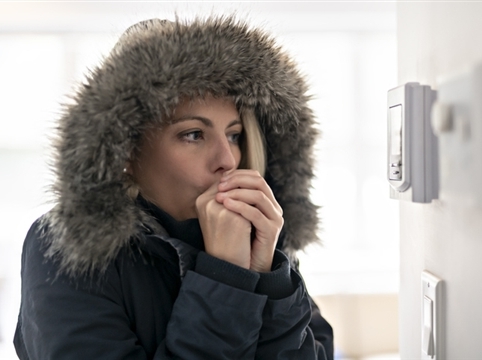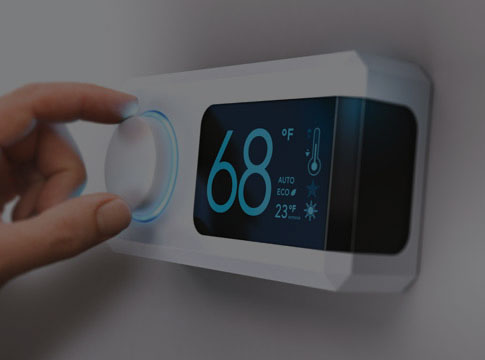Eugene is experiencing some of the coldest temperatures we've seen this winter. We know that keeping your home warm during cold winter nights is important—and we also know that high utility bills can be a real concern. When overnight low temperatures drop into the 20s, heating systems must work much harder to keep homes warm. Even if you leave your thermostat untouched, your heating system will consume more energy to maintain a steady indoor temperature as the outdoor temperature plummets.
As a community-owned utility, EWEB is committed to helping all our customers, including tenants and those on limited incomes, save money and stay warm during the cold winter months.
In our community, the highest demand for energy occurs during the coldest months when heating needs are at their peak. Since heating accounts for the majority of electricity costs in most homes, you might notice a significant increase in your January electric bill.
Even if you maintain your thermostat at 68°F, your energy use could rise by 75–200% as your heating system works overtime to keep your home comfortable. Smaller, energy-efficient homes or those with heat pumps fall on the lower end of this range, while larger homes or those with less efficient electric resistance heating (like baseboard or wall heaters) fall on the higher end.
For example, a typical, weatherized home in Eugene—built in the 1950s–70s and approximately 1,700 square feet—uses about 1,600 kWh per month on average. However, the seasonal shift from fall to winter brings dramatic changes in energy use, as does the type of heating system:
|
Electric Resistance Heat |
Heat Pump |
|
October |
January |
January |
| Average Eugene temperature |
65°F |
48°F |
48°F |
| Thermostat setting |
68°F |
68° |
68° |
| Typical home energy use |
830 kWh |
2,400 kWh |
1,477 kWh |
| Electric bill |
$111 |
$272 (145% increase from October) |
$177 (60% increase from October) |
“Heating accounts for about 50% of an average Eugene home’s annual energy use,” Matt Lutter, an Energy Specialist at EWEB, says. “But in winter, it can climb to 60–70% or more of a monthly bill. I’ve seen some customers’ energy usage increase tenfold from October to January.”
Estimate Your Electricity Costs
We understand that budgeting for electricity is important for our customers. To help you plan ahead, we’ve created a bill calculator (Excel file) that allows you to estimate your 2025 energy costs based on your household’s usage.
Check out our Budget and Rates page to download a bill calculator that can help you plan for seasonal bill changes.
Reduce Your Energy Use Year Round
To help customers reduce energy use and lower bills, EWEB offers rebates and zero-interest loans for energy-efficient upgrades. These programs are designed to make energy efficiency accessible to everyone, with enhanced rebates and loans available for income-qualifying households and rental properties.
For example:
|
Standard |
Limited-Income and/or Rental |
| Ductless Heat Pump |
$800 rebate, or up to a $16,000 zero-percent interest loan |
Owner-occupied rebate $4,500 Rental rebate $1,000 Up to a $16,000 zero-percent interest loan can be combined with rebate. |
| Insulation |
$1 per square foot of insulation (up to 50% of the job cost), and $40 for insulated entry doors, or up to $6,000 zero-interest loan |
100% of eligible insulation costs |
These upgrades not only help reduce energy bills but also make homes more comfortable during extreme weather. “Investing in efficiency is one of the best ways to manage energy costs, especially in winter but really all year round,” Lutter says.
Learn about EWEB’s rebate and loan programs.





